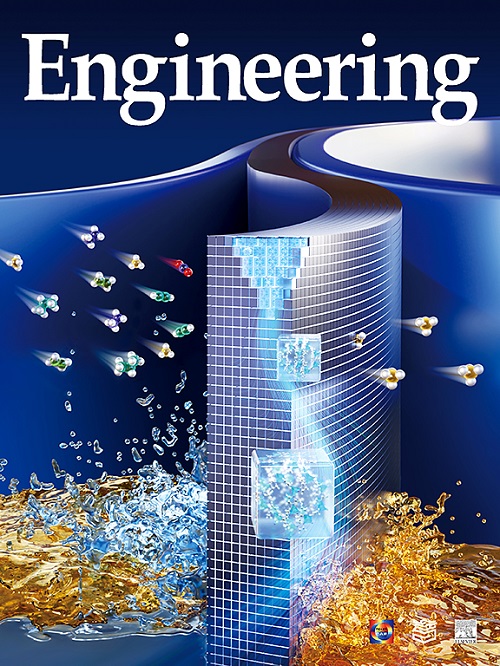考虑物理性质的机器人认知学习
IF 10.1
1区 工程技术
Q1 ENGINEERING, MULTIDISCIPLINARY
引用次数: 0
摘要
人类通过与环境的持续互动,增强感知和行为,实现认知发展。然而,目前的机器人缺乏类似人类的行动和进化能力,这是提高机器人智能的瓶颈。现有的研究主要将机器人建模为从观察到行动的单向静态映射,而忽略了感知和行为的动态过程。本文介绍了一种基于物理特性的机器人认知学习新方法。我们提出了一个理论框架,其中机器人被概念化为一个三体物理系统,包括感知体(p体),认知体(c体)和行为体(b体)。每个身体都参与物理动力学,并在闭环相互作用中运作。值得注意的是,三个关键的相互作用将这些身体联系在一起。c体依赖于p体提取的状态,并相互提供长期奖励,优化p体的感知策略。此外,c体通过子目标指导b体的行为,随后的p体衍生状态促进了c体的认知动力学学习。最后,b体遵循c体生成的子目标,并根据p体的感知状态执行动作,从而进入下一个交互步骤。这些相互作用促进了每个身体的共同进化,最终达到最佳设计。为了验证我们的方法,我们使用了一个四足机器人D 'Kitty进行导航任务,该机器人配备了一个可移动的全球摄像头。强大的导航能力需要感知、规划和D 'Kitty的动作之间复杂的协调。与传统方法相比,利用我们的框架可以产生更好的任务性能。综上所述,本文通过整合p体、c体和b体之间的物理交互,同时考虑物理特性,建立了机器人认知学习的范式转变。我们的框架在导航任务中的成功应用强调了它在增强机器人智能方面的有效性。本文章由计算机程序翻译,如有差异,请以英文原文为准。
Robot Cognitive Learning by Considering Physical Properties
Humans achieve cognitive development through continuous interaction with their environment, enhancing both perception and behavior. However, current robots lack the capacity for human-like action and evolution, posing a bottleneck to improving robotic intelligence. Existing research predominantly models robots as one-way, static mappings from observations to actions, neglecting the dynamic processes of perception and behavior. This paper introduces a novel approach to robot cognitive learning by considering physical properties. We propose a theoretical framework wherein a robot is conceptualized as a three-body physical system comprising a perception-body (P-body), a cognition-body (C-body), and a behavior-body (B-body). Each body engages in physical dynamics and operates within a closed-loop interaction. Significantly, three crucial interactions connect these bodies. The C-body relies on the P-body’s extracted states and reciprocally offers long-term rewards, optimizing the P-body’s perception policy. In addition, the C-body directs the B-body’s actions through sub-goals, and subsequent P-body-derived states facilitate the C-body’s cognition dynamics learning. At last, the B-body would follow the sub-goal generated by the C-body and perform actions conditioned on the perceptive state from the P-body, which leads to the next interactive step. These interactions foster the joint evolution of each body, culminating in optimal design. To validate our approach, we employ a navigation task using a four-legged robot, D’Kitty, equipped with a movable global camera. Navigational prowess demands intricate coordination of sensing, planning, and D’Kitty’s motion. Leveraging our framework yields superior task performance compared with conventional methodologies. In conclusion, this paper establishes a paradigm shift in robot cognitive learning by integrating physical interactions across the P-body, C-body, and B-body, while considering physical properties. Our framework’s successful application to a navigation task underscores its efficacy in enhancing robotic intelligence.
求助全文
通过发布文献求助,成功后即可免费获取论文全文。
去求助
来源期刊

Engineering
Environmental Science-Environmental Engineering
自引率
1.60%
发文量
335
审稿时长
35 days
期刊介绍:
Engineering, an international open-access journal initiated by the Chinese Academy of Engineering (CAE) in 2015, serves as a distinguished platform for disseminating cutting-edge advancements in engineering R&D, sharing major research outputs, and highlighting key achievements worldwide. The journal's objectives encompass reporting progress in engineering science, fostering discussions on hot topics, addressing areas of interest, challenges, and prospects in engineering development, while considering human and environmental well-being and ethics in engineering. It aims to inspire breakthroughs and innovations with profound economic and social significance, propelling them to advanced international standards and transforming them into a new productive force. Ultimately, this endeavor seeks to bring about positive changes globally, benefit humanity, and shape a new future.
 求助内容:
求助内容: 应助结果提醒方式:
应助结果提醒方式:


